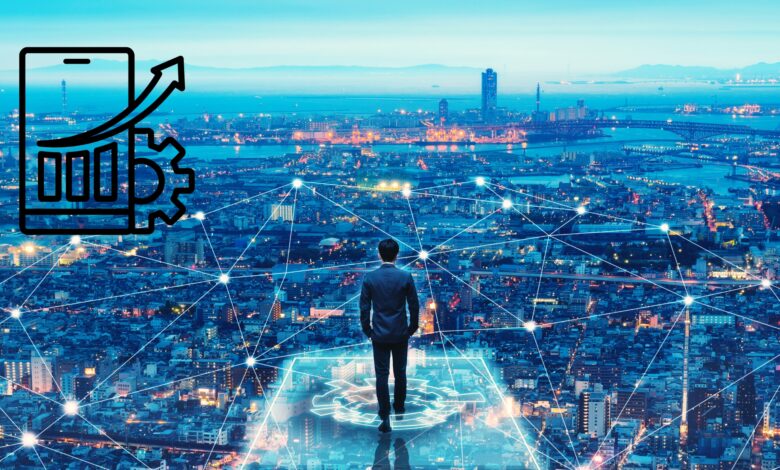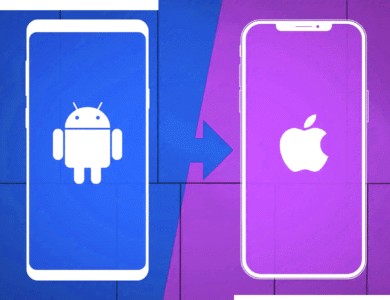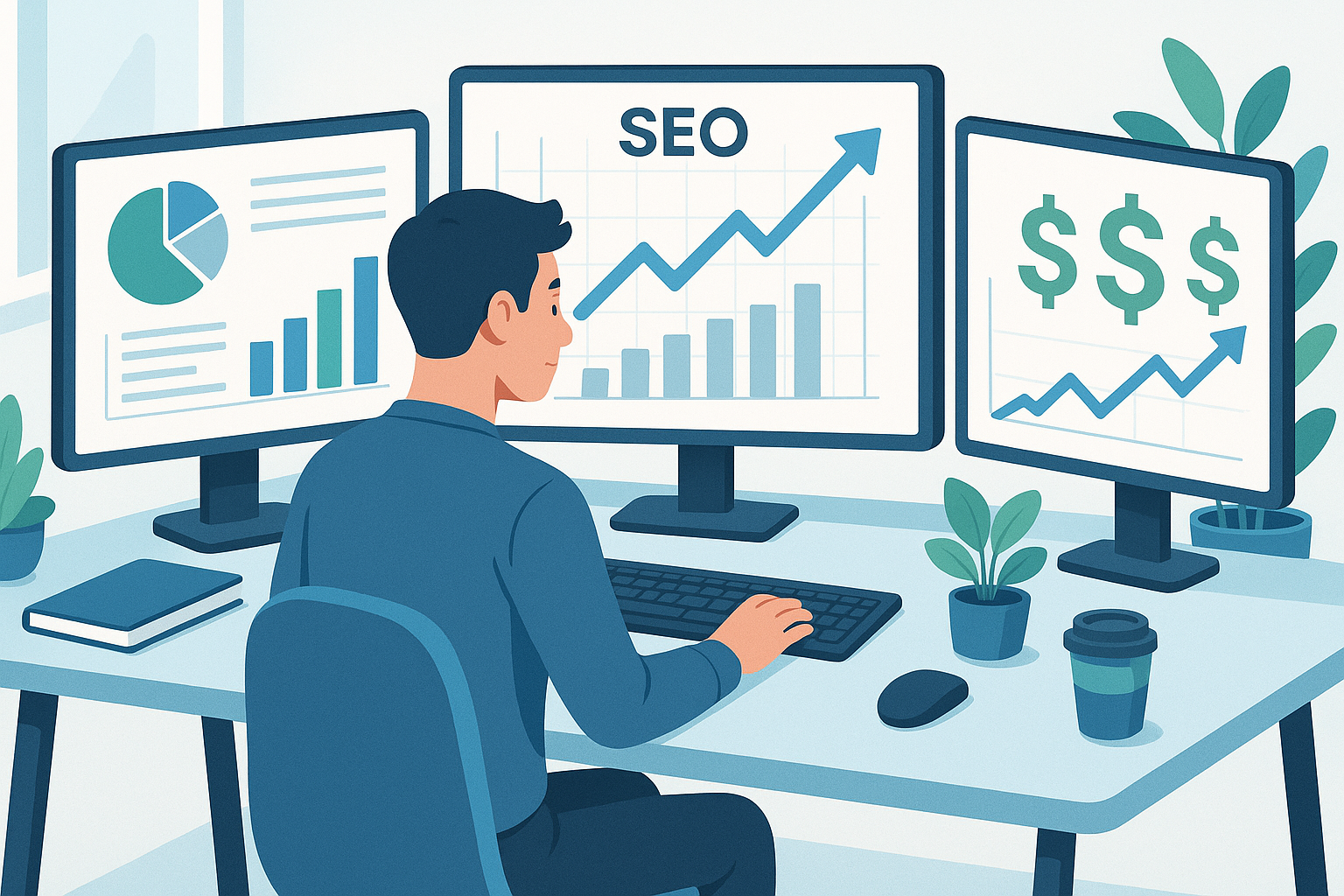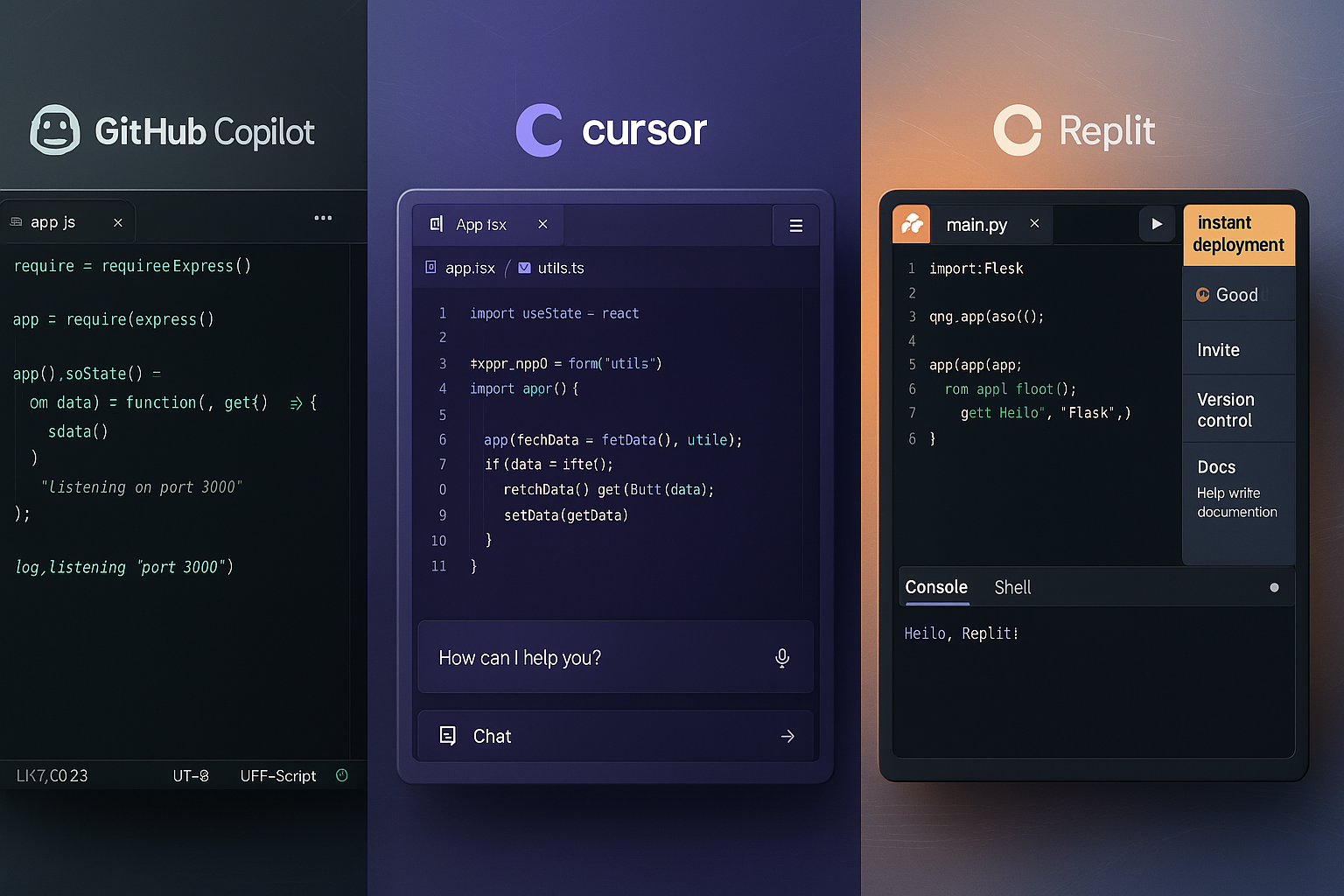The Future Is Here: 25 Must-Know Tech Trends for 2025
25 tech trends reshaping 2025 careers: AI, quantum computing, robotics & more. Discover high-demand skills and job opportunities in today's market.

The world of technology isn’t just evolving — it’s accelerating at warp speed. The emerging tech trends for 2025 prove that we’re no longer in the “cool demo” phase. We’ve officially entered an era where AI, automation, and digital transformation are driving real business outcomes, reshaping careers, and creating entirely new industries.
If 2024 was the year AI became mainstream, 2025 is the year it becomes mission-critical. Experts are calling this moment the “Binary Big Bang” — a complete shift in how we work, create, and interact with technology.
According to reports from the World Economic Forum and McKinsey, these once-experimental technologies have now crossed the tipping point, moving from research labs to real-world adoption. Businesses are building entire strategies around AI, edge computing, blockchain, and next-gen cloud systems, and the impact is everywhere.
Here’s the game-changer: 26% of tech job postings now require AI skills, a 98% increase year-over-year. This isn’t just about writing prompts for ChatGPT — it’s about understanding how artificial intelligence, machine learning, and automation are rewriting every role in technology.
With U.S. tech unemployment at just 2.9% — far below the national average — the demand for professionals who can bridge traditional tech skills with AI-driven workflows has never been higher.
Ready to stay ahead of the curve? Let’s dive into the 25 technology trends for 2025 that are shaping the future of technology, business, and innovation.
1. Agentic AI: Your New Digital Coworker
Agentic AI has rapidly emerged as a major focus, combining the flexibility of AI foundation models with the ability to act autonomously by creating “virtual coworkers” that can plan and execute multistep workflows. This isn’t about chatbots that answer questions – we’re talking about AI systems that can manage projects, coordinate tasks, and make decisions on your behalf.
Think of it as hiring a digital employee who never sleeps, never takes breaks, and can process information at superhuman speeds. Companies are deploying agentic AI to handle everything from customer service workflows to complex data analysis pipelines. The professionals who learn to design, deploy, and collaborate with these AI agents will be the ones setting their own salary expectations.
2. AI Governance Platforms: The New Sheriff in Town
As AI becomes ubiquitous, AI governance platforms have emerged to help organizations manage the legal, ethical, and operational performance of their AI systems. This technology creates, manages, and enforces policies ensuring responsible AI use while providing transparency to build trust and accountability.
This isn’t just about compliance – it’s about building AI systems that companies can actually trust to run their businesses. The challenge is that AI guidelines vary across regions and industries, creating a complex landscape that requires both technical expertise and regulatory understanding.
3. Disinformation Security: Fighting Fire with Fire
In an era of deepfakes and synthetic media, watermarking technology adds invisible tags to AI-generated content, making it easier to identify what’s real and what isn’t. But disinformation security goes beyond watermarks – it’s about building comprehensive systems that can detect, track, and counteract false information in real-time.
This emerging technology category systematically discerns trust, decreases fraud by strengthening identity validation controls, and protects brand reputation by identifying harmful narratives. Companies need professionals who understand both the technical aspects of content authentication and the broader implications of information warfare.
4. Ambient Invisible Intelligence: Technology That Just Works
Ambient invisible intelligence involves technology unobtrusively integrated into the environment to enable more natural, intuitive experiences. Instead of pulling out your phone or clicking through interfaces, the technology around you simply anticipates what you need and provides it seamlessly.
This trend enables low-cost, real-time tracking and sensing of items, improving visibility and efficiency across everything from retail to manufacturing. The challenge is addressing privacy concerns while creating experiences that feel magical rather than invasive.
5. Energy-Efficient Computing: Green is the New Black
Energy-efficient computing approaches sustainability through more efficient architecture, code and algorithms, hardware optimized for efficiency, and renewable energy to run systems. This isn’t just about being environmentally friendly – it’s about building sustainable business models as energy costs continue to rise.
Companies are facing legal, commercial, and social pressures to improve sustainability by reducing their carbon footprint. The professionals who can design systems that deliver better performance while using less energy will be invaluable.
Also Read: Top 15 Upcoming Tech Trends for 2025
6. Hybrid Computing: The Best of All Worlds
Hybrid computing combines different compute, storage, and network mechanisms to solve computational problems, creating highly efficient, high-speed, transformative innovation environments. This approach enables AI that performs beyond current technological limits and supports autonomous businesses powered by higher levels of automation.
While the technology is complex and requires specialized skills, it’s opening up possibilities for augmented human capability and real-time personalization at scales that weren’t previously possible.
7. Spatial Computing: Digital Meets Physical
Spatial computing digitally enhances the physical world using technologies like augmented and virtual reality to offer immersive experiences. But this goes beyond gaming and entertainment – we’re seeing applications in healthcare, education, manufacturing, and professional collaboration.
The technology addresses consumer demand for immersive and interactive experiences while satisfying the need for sophisticated visualization tools that traditional screens simply can’t provide.
8. Structural Battery Composites: Power in the Structure
Structural battery composites (SBCs) are weight-bearing materials – like carbon fiber or epoxy resin – that can also store electrical energy, making electric vehicles lighter and more efficient. This technology could revolutionize everything from automotive to aerospace by eliminating the need for separate battery compartments.
Applications include vehicle fuselages that double as power sources, dramatically changing how we think about energy storage and structural design.
9. Generative Search: Finding What You Need Before You Know You Need It
Generative search promises to make finding information simple and quick, with AI models summarizing information from many online sources to return unique answers. This may signal the end of traditional search engines and the rise of personal AI assistants that understand context and intent.
On your device, generative search can comb through documents, photos, and videos, recognizing objects and people to help you find information faster than ever before.
10. AI-Enhanced Robotics: Robots That Learn on the Job
Thanks to today’s generative AI boom, robots are learning new tasks faster than ever, getting closer to general-purpose robots that could be dropped into new environments and tackle various tasks almost instantly. These aren’t the single-purpose factory robots of the past – they’re adaptable, intelligent systems that can work alongside humans.
From surgical assistants to warehouse operators to home helpers, AI-enhanced robotics is moving beyond manufacturing into every aspect of daily life.
11. Alternative Jet Fuels: Aviation Goes Green
New fuels made from used cooking oil, industrial waste, or even gases in the air could help power planes without fossil fuels, with factories springing up to produce them and new government mandates requiring their use. This represents a massive shift in the aviation industry toward sustainability.
The transition is being driven by both environmental concerns and economic incentives, creating new opportunities in biochemical engineering and sustainable manufacturing.
12. Personalized Medicine 2.0: Treatment Based on Your DNA
Advances in genomics and biotechnology now allow doctors to select treatments based on a patient’s unique genetic makeup, environmental factors, and lifestyle choices. This approach improves outcomes while reducing side effects, moving medicine from reactive treatment to predictive prevention.
The integration of AI with genetic analysis is enabling the discovery of new therapeutic targets and the development of treatments for previously incurable diseases.
13. Neuromorphic Computing: Chips That Think Like Brains
Neuromorphic computing designs chips to resemble the neural architecture and processing methods of the human brain. These systems process information fundamentally differently from conventional computers, improving efficiency for sensory data processing and pattern recognition.
This technology has the potential to dramatically enhance computational power and energy efficiency, especially in applications requiring real-time learning and adaptation.
14. Advanced Materials Science: Building Blocks of Tomorrow
Nanotechnology involves manipulating matter at atomic and molecular levels, enhancing or creating materials with novel properties for more effective drug delivery, enhanced materials performance, and innovations in electronics. These advances are enabling everything from self-healing materials to programmable matter.
Applications range from stronger, lighter construction materials to smart textiles that can monitor health and environmental conditions.
15. Osmotic Power: Energy from Water
Osmotic power generation harnesses the energy created when fresh water and salt water meet, offering a renewable energy source that’s available wherever rivers meet oceans. This technology could provide consistent power generation regardless of weather conditions.
While still emerging, osmotic power represents a significant opportunity for coastal regions to generate clean energy at scale.
16. Digital Twins at Scale: Virtual Everything
Digital twins create virtual replicas of physical systems for simulation, monitoring, and optimization. But the technology has evolved beyond individual machines to encompass entire factories, cities, and ecosystems.
These virtual models enable organizations to test changes and predict problems without impacting real-world operations, dramatically reducing costs and risks associated with innovation.
17. Voice and Conversational AI: Natural Communication
Voice-activated technology has evolved far beyond simple commands to natural conversation. Modern systems understand context, handle complex requests, and integrate seamlessly with multiple systems to provide comprehensive assistance.
This evolution is making technology more accessible and enabling hands-free operation in situations where traditional interfaces aren’t practical, from healthcare to manufacturing to automotive applications.
18. Extended Reality for Professional Training
Extended Reality (XR) combines virtual reality, augmented reality, and mixed reality to create immersive training environments that are safer, more cost-effective, and more engaging than traditional methods.
Training applications span from medical procedures to complex manufacturing processes, enabling professionals to practice high-stakes scenarios without real-world consequences.
19. Sustainable Technology Design: Built to Last
Sustainable tech encompasses the entire lifecycle of technological products, from design and manufacturing to disposal and recycling. The focus is on reducing electronic waste, improving energy efficiency, and using environmentally friendly materials.
This isn’t just about corporate responsibility – it’s about building business models that remain viable as environmental regulations become stricter and resource costs increase.
20. Edge AI: Intelligence Where You Need It
Edge AI brings artificial intelligence processing directly to devices and sensors, reducing latency and enabling real-time decision-making without relying on cloud connectivity. This is crucial for applications like autonomous vehicles, industrial automation, and healthcare monitoring.
By processing data locally, edge AI also addresses privacy concerns and reduces bandwidth requirements, making AI applications more practical and secure.
21. Quantum-Ready Cybersecurity: Future-Proofing Security
Quantum computers are likely to pose a severe threat to today’s encryption practices, making updating encryption more urgent than ever. Organizations are developing quantum-resistant encryption methods to protect against future quantum computing attacks.
This involves both new cryptographic techniques and hybrid approaches that provide security in both classical and quantum computing environments.
22. Biotechnology in Climate Adaptation
Advanced biotechnology is developing crops that can thrive in changing climate conditions, resist diseases, and provide enhanced nutrition. CRISPR and other gene-editing technologies enable the creation of plants that can survive droughts, grow in saline soil, and produce higher yields with fewer resources.
This technology is essential for ensuring food security as global populations grow and climate conditions become more challenging.
23. Commercial Space Infrastructure: The Final Frontier
The space economy is expanding beyond tourism to include manufacturing, research, and resource extraction. Companies are developing orbital facilities for everything from pharmaceutical production to asteroid mining.
This expansion is driving advances in aerospace technology and creating new career paths in space-based industries.
24. Autonomous Logistics: Self-Managing Supply Chains
Autonomous systems are transforming logistics and supply chain management, from self-driving delivery vehicles to automated warehouse operations. These systems can optimize routes, manage inventory, and coordinate complex distribution networks with minimal human intervention.
The technology is reducing costs, improving efficiency, and enabling new business models in e-commerce and manufacturing.
25. Brain-Computer Interfaces: Direct Neural Connection
About 25 clinical trials are now underway for brain-computer interfaces, which face a critical test as the technology moves from research to practical applications. These systems enable direct communication between the brain and external devices, offering new possibilities for treating neurological conditions and augmenting human capabilities.
Applications range from helping paralyzed patients control computers to enabling new forms of human-computer interaction that could revolutionize how we work and communicate.
The Career Opportunity Landscape
So what does all this mean for your career in 2025? The World Economic Forum’s Future of Jobs Report 2025 indicates that job creation and destruction due to structural transformation will amount to 22% of today’s total jobs, with 170 million new jobs expected to be created.
Here are the 25 hottest career opportunities emerging from these trends:
- Agentic AI Developer – Design and deploy autonomous AI systems that can plan and execute complex workflows
- AI Governance Specialist – Ensure responsible AI deployment and regulatory compliance across organizations
- Disinformation Security Analyst – Develop and maintain systems to detect and counter false information Ambient Computing Engineer – Create seamlessly integrated technology experiences in physical environments
- Energy-Efficient Systems Architect – Design computing systems that maximize performance while minimizing energy consumption
- Hybrid Computing Specialist – Integrate different computing paradigms to solve complex problems
- Spatial Computing Developer – Build immersive experiences that blend digital and physical worlds
- Structural Battery Engineer – Develop materials that combine structural support with energy storage Generative Search Architect – Create AI-powered search systems that understand intent and context
- AI Robotics Engineer – Develop robots that can learn and adapt to new environments autonomously Sustainable Fuel Technologist – Engineer alternative fuels for aviation and other transportation applications Personalized Medicine Consultant – Help patients and providers navigate genomics-based treatment options
- Neuromorphic Hardware Designer – Create brain-inspired computing systems for specialized applications Advanced Materials Scientist – Develop new materials with programmable properties for emerging applications
- Osmotic Power Engineer – Design and maintain renewable energy systems based on salinity differentials Digital Twin Specialist – Create and manage virtual replicas of complex physical systems
- Conversational AI Designer – Develop natural language interfaces for human-computer interaction
- XR Training Developer – Create immersive training experiences for professional development
- Sustainable Tech Consultant – Help organizations reduce environmental impact through technology choices Edge AI Specialist – Deploy artificial intelligence directly to edge devices and sensors
- Quantum Security Engineer – Develop encryption systems resistant to quantum computing attacks
- Climate Adaptation Biotechnologist – Engineer crops and organisms adapted to changing environmental conditions
- Commercial Space Operations Manager – Coordinate business activities in orbital and extraterrestrial environments
- Autonomous Logistics Coordinator – Design and manage self-operating supply chain systems
- Brain-Computer Interface Developer – Create direct neural connections for medical and enhancement applications
Making Your Move in 2025
The key insight for 2025 is that companies are prioritizing candidates who can build, secure, and scale emerging technologies, with AI expertise becoming core to product innovation, operational efficiency, and customer experiences.
The current hiring market bears little resemblance to what it was even two years ago, with rapid AI advancements, evolving candidate expectations, and growing emphasis on skills-based hiring completely reshaping how companies find and retain talent.
Here’s your practical action plan:
Choose Your Specialization Wisely: Demand for senior-level and specialized roles in AI, cybersecurity, and cloud infrastructure remains strong, while companies move away from generalist positions. Pick one or two related technologies from this list and dive deep.
Embrace Skills-Based Learning: Traditional degree requirements are becoming less important than demonstrable skills. Focus on building portfolio projects that showcase your ability to work with emerging technologies.
Consider Remote and Contract Opportunities: 65% of tech leaders are increasing their use of contract talent, and remote work has opened access to global talent pools. Don’t limit yourself geographically.
Stay Current with AI Integration: Every role now involves some level of AI collaboration. Learn how AI can enhance your chosen specialization rather than replace it.
Build Cross-Functional Skills: The most valuable professionals can bridge technical implementation with business strategy, regulatory compliance, and ethical considerations.
The future isn’t coming – it’s here right now. These trends represent powerful new tools to address productivity, security, and innovation challenges, and the professionals who master them will shape the next decade of technological progress.
The question isn’t whether these technologies will transform how we work. They already are. The question is whether you’ll be driving that transformation or scrambling to catch up. Choose your path, start learning, and prepare to build the future. The opportunities have never been better for those bold enough to embrace the change.



